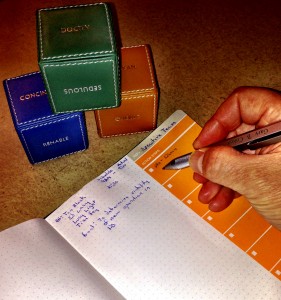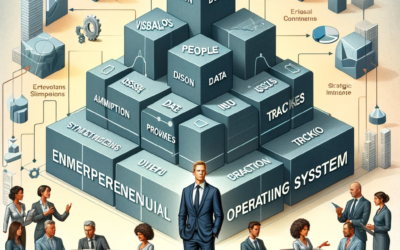 Keep the meeting minutes, control the history of the meeting
Keep the meeting minutes, control the history of the meeting
In meetings where there is no formal secretary, the convener will ask for a volunteer to take the minutes. Few hands, if any, will go up for this responsibility. It’s seen by some as a burdensome or perhaps undignified task. However, the minutes-taker has considerable power.
The purpose of meeting minutes
In today’s fast-paced world, people go from one meeting to the next and their memories are short. Much of what happened in a meeting will be forgotten or hazy. Research shows that people who take notes, summarizing and interpreting what’s been said, are more likely to retain what they’ve heard.
Minutes-takers not only will retain more information, they have a chance to capture what they, personally, would like to have remembered from the meeting. Of course, minutes-takers have to behave ethically. They can’t omit important decisions or discussions, but they can highlight issues or perspectives that they feel strongly about.
How minute taking increases productivity
During strategic planning with our clients, we outline the importance of critical tasks — like taking meeting minutes — for increasing productivity and future objectives. After all, why spend an hour in a meeting just to add hazy objectives to your docket?
Get more from your meetings by having a minute taker to outline accomplished agenda items and highlight new tasks, goals, and plans. Get the most out of every meeting with our easy 10-step guide to compiling meeting minutes:
How to Keep Meeting Minutes
1. Start with the goal of the meeting
At the top of the meeting minutes, put the goal along with the name and/or date of the meeting. It’s easier to take minutes when you know exactly what you’re expected to accomplish in the meeting. If you’re not sure about the goal of the meeting, be sure to ask at the outset.
2. List who is present at the meeting
List everyone who attends. Be sure to get names of people you don’t know up front, since you’ll need their names as you record the meeting.
Pro tip: If everyone doesn’t already know one another’s names, pass around an attendance sheet or ask everyone to create table tents with their names on them.
Don’t forget to include anyone who’s attending the meeting remotely (via video or teleconference), and list those not in attendance. Review the meeting’s email invitation afterward to make sure you got everybody.
3. Record the start time
By capturing the start time and date in the meeting minutes, you can begin to see if there is a systemic issue with timely starts and bring this concern to the participants after enough data is captured.
4. Capture key items
Taking meeting minutes is not like 1960s movies where the secretary comes into the boardroom and sits quietly without participating. The taker of the notes is still expected to contribute.
Concisely jot down the most important takeaways from the meeting:
- What is discussed
- What is decided
- What is accomplished
- What are the next steps/actions
For important discussions and debates, provide all perspectives (using an anchor chart or some other shorthand). If a decision was made, state it before describing how it came to pass. Effective meeting minutes should not be a full transcript, but rather just enough to trigger a recall of the meeting’s most significant actions.
Pro tip: It’s important to record not just what was decided, but how and by whom. Was the decision the result of a team vote, a consensus, or a “decider” who made the decision for the group? Often when an organization struggles, it looks for scapegoats to blame for certain outcomes. An accurate recording of the minutes helps ensure that individuals are not blamed for group decisions.
5. Describe the next steps in detail
- What measures need to be taken? These actions must be specific so when others look back at these minutes, they know exactly what the expectations are.
- Who is responsible for each action? There should always be a DRI (Directly Responsible Individual), even if a team is assigned to work on the action. A DRI control the actions, drives it forward, and ensures it doesn’t fall between the cracks. That said, list all the team members participating in this effort, not just the DRI.
- When is the action finished? Give the end state and describe what the measurable outcome(s) will be.
- What resources are needed? Too often actions are initiated, and decisions made without the resources required to complete the operation. Not having the right resources in mind or in place may slow down the organization as a whole. To stay efficient, determine the needed resources and get approval for them in advance, if possible.
- When will the action begin and end? Often leaders become annoyed because they remember making a decision and then forget when they should see progress. By putting both a start date and end date, it sets the expectation for all meeting participants ahead of time, successfully avoid delay or confusion.
- When will the DRI report back? Indicate whether the DRI will be reporting again at a future meeting or to a specific party separately.
- How should the DRI report Back? Some organizations will want formal presentations, others a small blurb in a weekly report. To satisfy all participants, find out what form the reporting back to the team should take.
6. Don’t belittle or embarrass anyone in your meeting minutes
When written down, sarcasm or intended humor can easily be misinterpreted by the readers. The minutes is not the place to call people out or make others feel less than. Keep the minutes concise and professional.
7. Edit & proof the meeting minutes
Typos and grammatical errors distract readers from what matters. Check for errors while ensuring the minutes are clear and crisp. If possible, have someone proof your minutes before you distribute them.
8. Send the minutes out ASAP
Timeliness is next to Godliness (or at least highly respected in organizational life). Get the minutes out within an hour of the meeting or by the end of the day at the latest. By providing the feedback quickly, you will elevate the importance and get the ball rolling.
9. Attach relevant documents
Attach any handouts or materials electronically, so that all participants and non-participants have easy access to them. This is helpful for individuals who missed the meeting or if people need to get a brief reminder of what was covered.
10. Ask a question when distributing the minutes
When distributing meeting minutes, ask a question via email to the participants, so that they will have to look at the minutes to respond. If you don’t ask a question, they will likely allow the email to be drowned by a flood of other equally essential emails. You might ask if you got a particular point correct, or if you got the assignments correct.
How to designate a meeting minute taker and stay efficient in meeting
If you want to record effective meeting minutes, you may have to delegate. First, learn the role of a meeting facilitator and get to know all of the other crucial meeting roles, like timekeeper, so you can drive more participation and productivity. Let your team members choose their roles or designate them specifically based on their core competencies. If you need an extra push, let our experts help!
We understand there’s a lot of pressure on team leaders, and we’re here to take the edge off. At CO2 Partners, we offer coaching for anything from soft skills and day-to-day tasks (like staying efficient in meetings) to strategic planning for company growth and operations inefficiencies.
Our services are designed to fit you, your team, and your company’s unique needs. Contact us today for a risk-free chat about your company and let our experts help you uncover underlying opportunities and potential within you and your team.
Related Posts
What’s the Write Way to approach meetings?
7 Reasons NOT to Have a Meeting
Do You Give Adequate Time to the Important Things?
14 Tips for Leading an Efficient and Effective Meeting
From soft skills and day to day tasks (like determining “what is the best business report format”) to strategic planning for new opportunities, company growth, operations inefficiencies and more.



